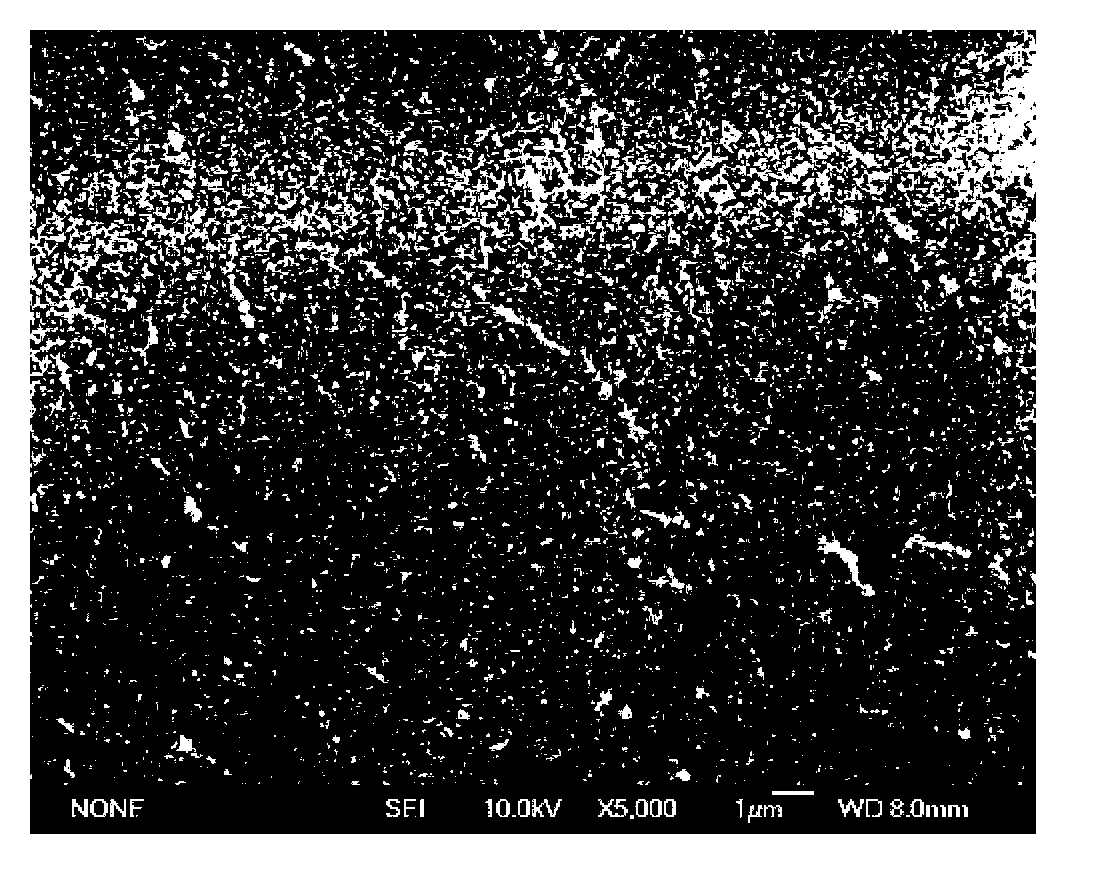Reinforcement material for preservation of cultural relics, and preparation method and application thereof
A technology for the protection and reinforcement of cultural relics, which is applied in the field of non-cracking silicone protective agent and the protection and reinforcement of stone cultural relics. Large size, reduced stone anti-salt damage ability, etc., to achieve obvious reinforcement effect, superior performance, and improve the effect of anti-salt aging
- Summary
- Abstract
- Description
- Claims
- Application Information
AI Technical Summary
Problems solved by technology
Method used
Image
Examples
preparation example Construction
[0029] The preparation method and use method of the present invention comprise the following steps:
[0030] (1) Preparation of protective materials: Add nano-silica isopropanol sol, catalyst and water to an appropriate amount of tetraethyl orthosilicate for preliminary hydrolysis, then add polydimethylsiloxane, and stir magnetically at room temperature for 2-10 hours.
[0031] (2) Reinforcement process: Apply protective materials to stone cultural relics by dipping, spraying, brushing, etc., which can be performed multiple times depending on the actual situation. Place the finished stone samples in the air at normal temperature and pressure or in a constant temperature and humidity box for curing.
[0032] Firstly, the silicon dioxide nanoparticles are dispersed with isopropanol to form a uniform sol by ultrasonic dispersion. The size of the silicon dioxide nanoparticles can be 5-50 nanometers, preferably 10-20nm. The mass fraction of nano-silicon in the propanol sol is 0.5-...
Embodiment 1
[0047] 5g of silicon dioxide nanoparticles (nano-SiO 2 ) and 95g isopropanol to form a homogeneous sol, take 40g of this sol and mix it with 9g tetraethyl orthosilicate (TEOS), and ultrasonically disperse it for 10 minutes. Add 3 g of water and 0.09 g of DBTL dropwise, stir magnetically at 40°C for 4 h, add dropwise 0.45 g of hydroxyl-terminated polydimethylsiloxane (PDMS) and continue stirring for 1 h to obtain a translucent homogeneous solution. The mass ratio of TEOS, nano silicon oxide, and PDMS added is 100:22.2:5; the amount of water added is 3g, and the ratio of water to silicon (the molar ratio of tetraethylorthosilicate to water) is 4:1.
[0048] Use the red sandstone near the Dafo Temple in Shaanxi, cut and process it into two specifications of 2*2*2cm block and 4*4*1cm flake, ultrasonically clean with ethanol, and dry naturally. Immerse with the above protective agent, take it out and place it in a constant temperature and humidity box (SETH-Z-022R, ESPEC) to cure ...
experiment example 2
[0057] Example 1 was basically repeated, except that the amount of silicon dioxide nanoparticles in the component was 10% of that of tetraethyl orthosilicate. Microscopic observation shows that the surface of the sample is continuous without cracking, and nano-clusters are visible; the color difference value ΔE is 6.12, with a slight color change, showing a little whitening; the appearance of the sample changes little during the salt damage cycle, and the mass loss after 5 dry and wet salt cycles About 16%.
PUM
| Property | Measurement | Unit |
|---|---|---|
| particle diameter | aaaaa | aaaaa |
| particle diameter | aaaaa | aaaaa |
| size | aaaaa | aaaaa |
Abstract
Description
Claims
Application Information
 Login to View More
Login to View More - R&D
- Intellectual Property
- Life Sciences
- Materials
- Tech Scout
- Unparalleled Data Quality
- Higher Quality Content
- 60% Fewer Hallucinations
Browse by: Latest US Patents, China's latest patents, Technical Efficacy Thesaurus, Application Domain, Technology Topic, Popular Technical Reports.
© 2025 PatSnap. All rights reserved.Legal|Privacy policy|Modern Slavery Act Transparency Statement|Sitemap|About US| Contact US: help@patsnap.com


